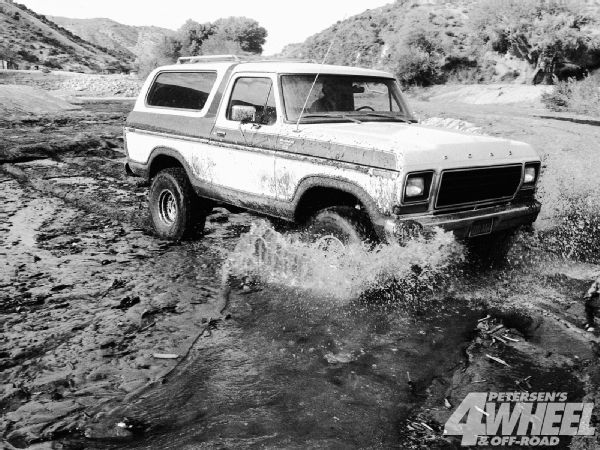
A few years back, the general consensus of the four-wheeling world was that mud tires were for mud only and all-seasons were for everything else. Nowadays, it's difficult to find a truck on a trail ride that's not running some sort of aggressive tread designed for mud. Rockcrawling with Boggers seems a bit absurd, but lots of people do it, and you'll occasionally run across hardcore guys that swear by a mild all-season tread. We decided to test the theory ourselves with two of the most popular truck tires on the market: BFGoodrich All-Terrains and BFGoodrich Mud-Terrains.

The Test To make things as fair as possible, we mounted All-Terrains and Mud-Terrains of the same size (35x12.50, the largest size BFG makes for both types) on identical sets of 15x8.5 Center Line wheels. We used one truck and one driver to test both sets. We ran one set through a series of obstacles and terrain and then ran the other set through the same course. The performance of the tires was evaluated by both the driver and observers. We also ran both sets on the street for a long period of time so that differences in highway ride, traction, wear, and noise could be observed.
Conclusions Check out the photos and captions for the specifics on where each type of tire excelled. Overall, the performance of both was extremely close, and we discovered that both types of tires have excellent manners on and off road. The Mud-Terrains are among the quietest aggressive tires we've ever heard on the street, and the All-Terrains provide an impressive amount of traction on the rocks and in the sand. Some of the tests had predictable outcomes, such as the M/Ts clearly beating the A/Ts in mud, but there were a few surprises. The test was so close, in fact, that which tire is better depends a lot on personal preference and the types of four-wheeling the truck more frequently encounters. If we had to choose, we'd pick the All-Terrains for a truck that sees a lot of street miles and a fair amount of weekend 'wheeling, but the excellent road manners and just-a-little-better off-road traction of the Mud-Terrains make them a natural choice for avid four-wheelers who also rely on their truck to get them to work every day.
PhotosView Slideshow










